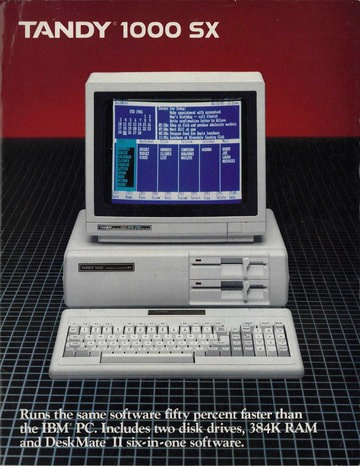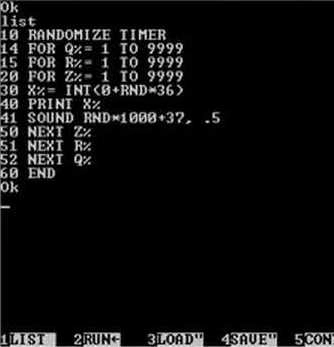RetroTech: How A Tandy 1000 RSX Kickstarted My Career In Software Development
It was 1996 and I was 5 years old in Silicon Valley, in the prime of computer surplus. I just pressed that big beautiful red power button on my newly acquired Tandy 1000 RSX someone just so happened to be throwing away down the street (a fairly regular occurrence with computer hardware at the time).
As the CRT screen came to life, the faint 60hz hum I’d later grow much accustomed to know grew stronger in the background as I was stunned by the vivid imagery of an 8-bit color graphics card. The massive 20MB hard drive clicked and clacked away as the system booted up. This machine was a beast (relatively lol) and little did I know, I had just unlocked an interest and passion in tech that I would never be able to shake.
Today it may seem comical to ‘brag’ about such a primitive machine; but to me, this computer was definitely a powerhouse at the time when I couldn’t dar dream of being able to own something new. It had a whopping 1MB of onboard memory, 25MHz processor, a screaming 512KB of VRAM.
Unlike other systems of the time, no boot disk was needed since a copy of MS-DOS was preprogrammed into the onboard ROM chips. But it had more than just MS-DOS on its ROM chips. It also had GW-BASIC and an odd little shell called DeskMate. DeskMate looked like an odd knockoff of Microsoft Windows, but it didn’t require a mouse and didn’t have any third-party apps. Still, it was useful. It had a text editor, a primitive database, a drawing program and even a music composition app. Essentially the equivalent of a PDA just a handful of years later.
The true career kick-off for me was when I discoverd the potential of GW-BASIC. My small yet growing mind exploded with curiosity and I started making countless useless programs that could be ran; mostly fun with the system ‘speaker’. It opened my mind up to what logic was, and started my mind understanding the underlying tech behind the infrastructure in the world around us.



Over the years, as I continued to build & own manyyy other machines over the years, nothing has been as pivotal and instrumental in the start of my career as this machine has. My career would not be where it is today without my Tandy providing all of my foundational software development knowledge and exposure.
Share This Post
In the realm of retro software, Microsoft Access for Windows 95 holds a special place in my heart. It may seem surprising, but this clunky yet somehow elegant application played a pivotal role in shaping my understanding of relational databases and kickstarting my career in software development. Let me take you on a journey back to the days of Windows 95, when I first crossed paths with Access.
It was 1996 and I was 5 years old in Silicon Valley, in the prime of computer surplus. I just pressed that big beautiful red power button on my newly acquired Tandy 1000 RSX someone just so happened to be throwing away down the street (a fairly regular occurrence with computer hardware at the time).
When Apple launched the Vision Pro, it promised a revolution in spatial computing. But for those of us who love to consume and create media, the limited internal storage quickly became a glaring issue. Enter the WD My Passport Wireless Pro, an unassuming device that has transformed my Vision Pro experience. It’s more than just an external drive; it’s a portable media server, a productivity hub, and a travel essential – all in one sleek package.
When I first slid on the Apple Vision Pro, I was bracing myself for another overhyped gadget. Instead, what I encountered was a transformative leap into the future of digital interaction. This wasn’t merely a high-tech toy; it was a tool that seamlessly wove itself into my daily coding rituals, shattering my preconceived limits of what technology could achieve. From that moment, I was hooked—immersed in a mixed reality that felt both groundbreaking and surprisingly intuitive.
Diving into a digital read can be a mixed bag. There you are, comfy in a quiet corner of your home, wrapped in your go-to blanket, ready for some undisturbed reading. You turn on your LCD tablet and, suddenly, it’s like you’re in a face-off with an overly bright flashlight. Then, switch the scene to reading outside on a sunny day. Instead of getting lost in your story, you’re wrestling with the sun’s glare bouncing off the screen.
james